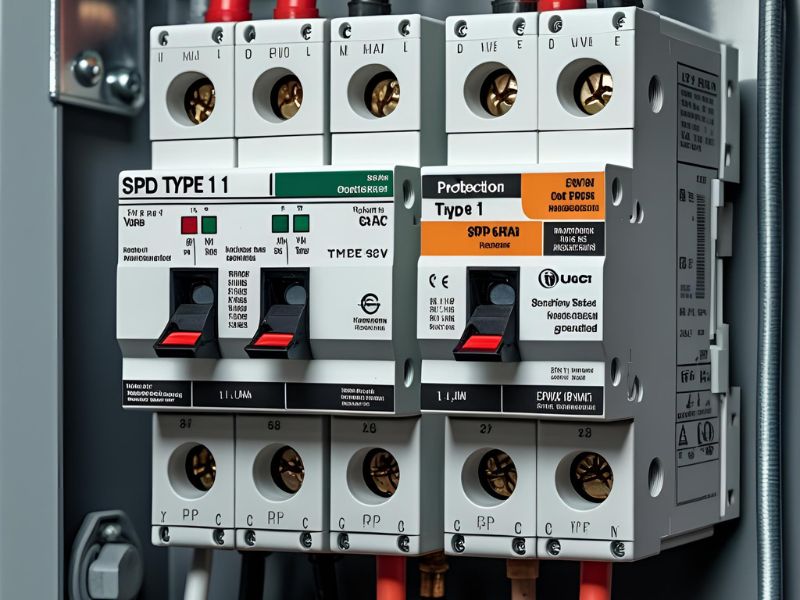
The IEC standard for SPD (Surge Protective Devices) is primarily governed by the IEC 61643 series, a comprehensive family of international standards that define performance requirements, test methods, and safety criteria for surge protection devices used in electrical systems. Understanding these standards is crucial for proper surge protection implementation and ensuring your electrical equipment remains safe from voltage surges.
The IEC standard for SPD encompasses multiple parts within the 61643 series, each addressing specific applications and requirements. On December 20, 2024, the IEC released IEC 61643-01:2024, representing a complete overhaul that replaces the older IEC 61643-11:2011 version. This foundational update now covers a wider scope, including performance requirements, detailed test methods, and safety requirements for surge protective devices rated up to 1,000 V AC or 1,500 V DC.
The first standalone IEC 61643-11:2025, published in June 2025, focuses specifically on surge protective devices for AC low voltage distribution systems, building upon the groundwork established by IEC 61643-01. This systematic approach ensures that surge protection devices meet stringent international standards while addressing the diverse needs of modern electrical installations.

IEC 61643-01:2024 serves as the cornerstone document that establishes fundamental principles for all surge protective devices. This standard introduces updated test methods that better reflect real-world surge conditions, particularly those caused by direct lightning strikes and switching operations in power systems. The standard specifies how surge protective devices spds should respond to transient overvoltages while maintaining their protective function.
The foundation standard establishes key parameters including maximum continuous operating voltage, nominal discharge current, and voltage protection level requirements. These specifications ensure that surge protection devices can effectively limit surge voltages while providing reliable protection for sensitive equipment connected to electrical systems.
IEC 61643-11 specifically addresses surge protective devices designed for low voltage surge protective applications in power supply systems. This standard defines three primary classes of devices based on their intended installation location and protection capabilities.
Class I devices are designed to handle high surge currents from direct lightning strikes, with impulse current ratings that can withstand the massive energy associated with direct effects of lightning. These surge protection devices must endure significant stress while maintaining their protective characteristics.
Class II devices protect against indirect lightning strikes and switching surges in electrical systems. They must withstand the nominal discharge current at least 19 times, demonstrating exceptional durability and life expectancy for network equipment protection.
Class III devices provide protection for sensitive equipment at the point of use, handling lower impulse currents while offering precise voltage protection for electronic devices and electrical appliances.
The telecommunications sector requires specialized protection standards addressed by IEC 61643-21. This standard covers voltage surge protective devices designed specifically for protecting communication lines, data transmission equipment, and network equipment from surge currents generated by lightning strikes or switching operations.
These surge protective devices must demonstrate exceptional performance in protecting against both combined modes and differential mode surges that can damage sensitive telecommunications equipment. The standard specifies test methods that simulate real-world conditions including electromagnetic pulse effects and transient overvoltages common in communication systems.
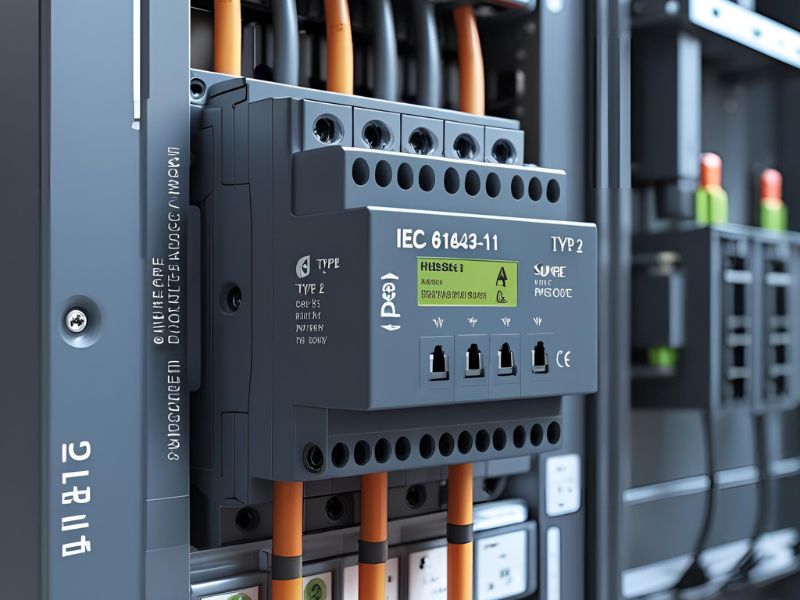
Photovoltaic systems present unique challenges for surge protection, addressed comprehensively by IEC 61643-31 and IEC 61643-32. These standards recognize that solar installations face exposure to direct lightning strikes while requiring protection for both DC and AC sides of the system.
The standards specify performance requirements for surge protection devices installed in photovoltaic systems, considering factors such as maximum voltage levels, open circuit voltage conditions, and the coordination between devices spd on different sides of power conversion equipment. Proper protection ensures the longevity of expensive solar equipment while maintaining system safety.
The IEC standard for SPD establishes a clear classification system based on installation location and protection capability. Understanding this system is essential for selecting appropriate protection devices for specific applications.
Type 1 SPDs install at the main distribution boards and service entrance, providing primary protection against direct lightning strikes. These devices handle impulse current with the characteristic 10/350 µs waveform, representing the energy content of direct lightning. Installation location for Type 1 devices typically occurs before the main electrical distribution point.
Type 2 SPDs install at distribution boards throughout the electrical system, providing secondary protection against indirect lightning strikes and switching surges. These devices handle the 8/20 µs nominal discharge current waveform and coordinate with Type 1 devices to create a comprehensive protection scheme.
Type 3 SPDs install near sensitive equipment, providing final protection with combined voltage and current protection. These devices handle the 1.2/50 µs voltage waveform combined with 8/20 µs current waveforms, offering precise protection for electronic devices.
The IEC standard for SPD defines several critical performance parameters that determine device effectiveness. The voltage protection level represents the maximum voltage that appears across the device terminals during surge events, directly affecting the protection provided to connected equipment.
Maximum continuous operating voltage defines the highest voltage at which the surge protection device can operate continuously without degradation. This parameter ensures device longevity under normal operating conditions while maintaining readiness to respond to surge events.
Nominal discharge current specifies the current level used for classification and performance testing of surge protection devices. Type 2 devices must withstand this current level at least 19 times, ensuring reliable long-term performance in electrical systems.
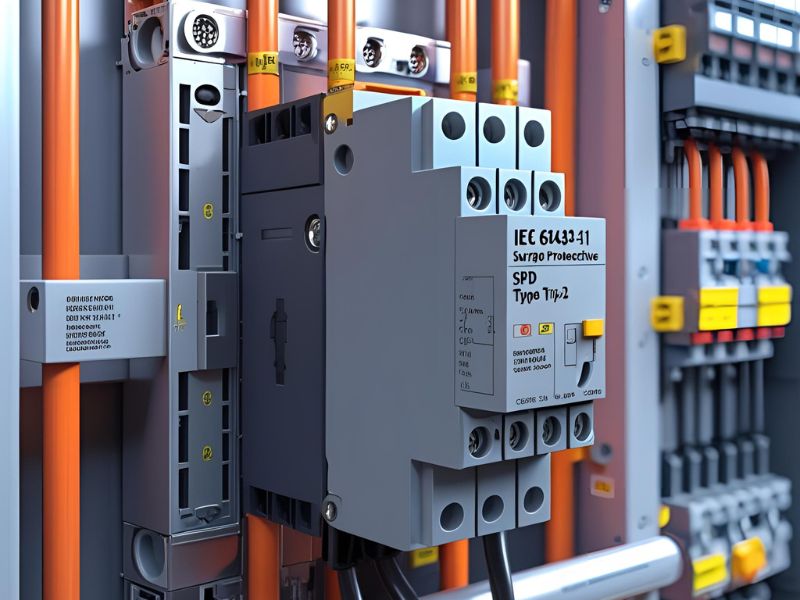
IEC standards specify rigorous test methods that validate surge protection device performance under controlled laboratory conditions. These tests simulate various surge scenarios including direct lightning strikes, indirect and direct effects of electromagnetic pulses, and switching operations in power systems.
Safety requirements encompass both electrical and mechanical aspects of device design. The standards mandate minimum clearance distances between live conductors and enclosure walls, typically requiring at least 10 mm spacing to prevent tracking or flashover conditions.
Circuit breakers and other protective devices must coordinate properly with surge protective devices to ensure safe operation during fault conditions. The standards specify requirements for backup protection and safe failure modes that prevent fire or explosion hazards.
Proper installation location is crucial for surge protection effectiveness. The IEC standard for SPD provides detailed guidance on where different types of devices should be installed within electrical systems to achieve optimal protection coordination.
Type 1 devices typically install at the main service entrance, providing the first line of defense against external surge sources. Type 2 devices install at sub-distribution points, creating protection zones throughout the electrical system. Type 3 devices install near sensitive equipment requiring the highest level of protection.
Coordination between different protection levels ensures that surge energy is managed systematically, with each device handling appropriate energy levels while allowing downstream devices to provide refined protection for sensitive equipment.
The IEC standard for SPD works in conjunction with IEC 62305, which addresses comprehensive lightning protection for buildings and structures. This integration ensures that surge protective devices form part of a holistic protection strategy rather than standalone components.
Understanding what is the difference between SPD and lightning protection is key here. External lightning protection systems capture and conduct lightning energy safely to ground, while internal surge protection devices handle residual energy that enters electrical systems. Proper coordination between these systems maximizes protection effectiveness while minimizing the risk of equipment damage.
Equipment rated for specific environments must consider both external lightning exposure and internal surge propagation. The standards provide guidance for assessing risk levels and selecting appropriate protection measures for different applications.
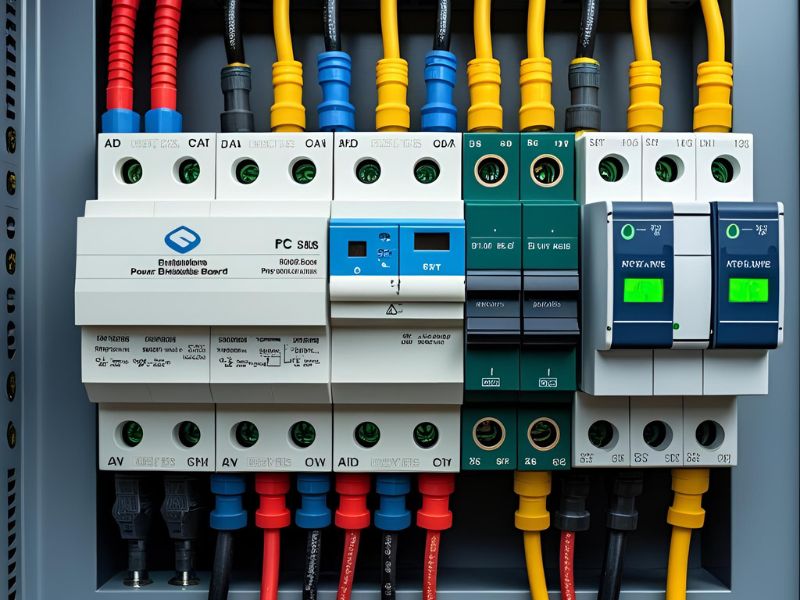
The 2024-2025 update cycle represents a significant evolution in surge protection standards. The new IEC 61643-01:2024 introduces enhanced test methods that better represent real-world surge conditions, particularly those encountered in modern power systems with increased electronic content. Professionals often ask BS EN IEC 62305 vs BS EN 62305 whats the difference, as understanding these subtle distinctions is crucial for compliance and system safety.
Updated testing procedures now include more sophisticated evaluation of device behavior under multiple surge events, better reflecting the reality that surge protective devices may experience numerous surge events throughout their service life. These changes ensure that devices spd provide reliable protection over extended periods.
The standards now include specific requirements for different types of electrical equipment, recognizing that power systems have become increasingly complex with the integration of renewable energy sources, energy storage systems, and advanced electronic controls.
Compliance with IEC standards requires comprehensive testing and certification by recognized testing laboratories. These facilities verify that surge protection devices meet all specified performance requirements under controlled conditions that simulate real-world operating environments.
Quality assurance extends beyond initial testing to include ongoing manufacturing oversight and periodic retesting to ensure continued compliance. This systematic approach provides confidence that certified devices will perform as expected when installed in electrical systems.
UL 1449 and other regional standards often reference IEC requirements, creating harmonized international approaches to surge protection that facilitate global trade while maintaining safety standards.
Understanding specific requirements for different applications helps engineers and installers select appropriate surge protection devices for various scenarios. Industrial facilities with large motors and switching equipment may require robust Type 1 and Type 2 coordination to handle switching operations while protecting sensitive control equipment.
Commercial buildings with extensive electronic systems benefit from comprehensive protection schemes that address both power and data line protection. The integration of IEC 61643-11 and IEC 61643-21 requirements ensures complete system protection.
Residential applications increasingly require surge protection as homes incorporate more electronic devices, smart home systems, and renewable energy sources. Understanding the IEC standard for SPD helps ensure appropriate protection levels for these evolving applications.
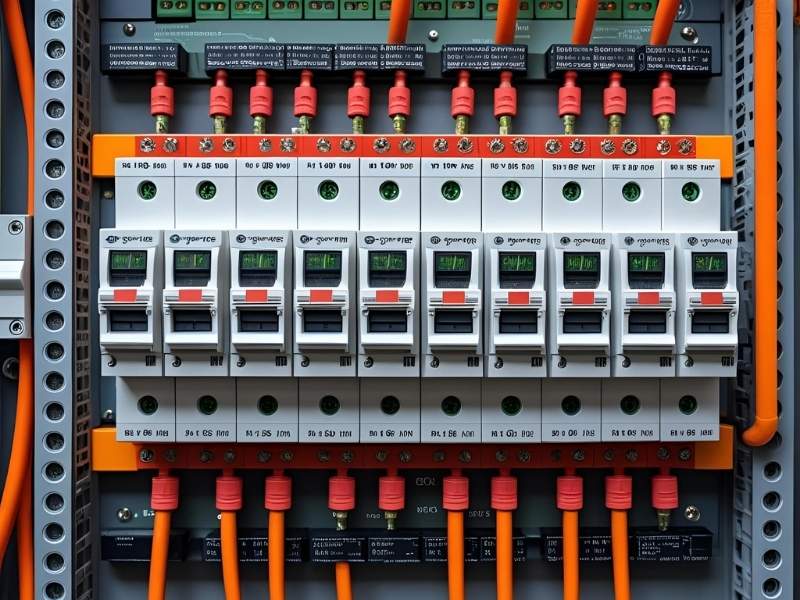
Implementing surge protection according to IEC standards requires expertise in system analysis, device selection, and installation practices. Professional testing services verify that installed systems meet standard requirements while providing ongoing monitoring to ensure continued effectiveness.
Proper surge protection assessment considers factors such as installation location, electrical system characteristics, connected equipment sensitivity, and environmental exposure levels. This comprehensive approach ensures that protection systems provide optimal performance throughout their service life.
Regular testing and maintenance according to manufacturer recommendations and industry standards help ensure that surge protective devices continue to provide reliable protection. Professional services can identify potential issues before they compromise system protection.
At Lightning Protection Testing UK, a trusted lightning protection company, we specialize in comprehensive surge protection system evaluation and testing according to the latest IEC standards. Our experienced engineers understand the complexities of modern electrical systems and can provide expert guidance on implementing effective surge protection strategies that comply with current IEC 61643 requirements.
Get your free quote today from Lightning Protection Testing UK for professional SPD testing and compliance verification services.